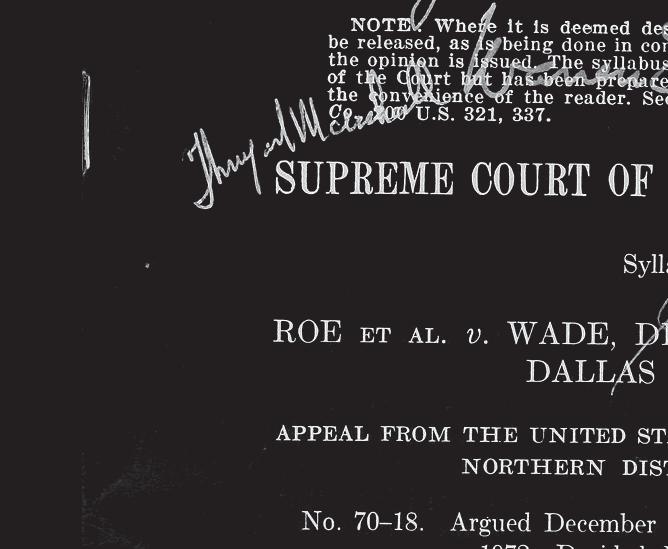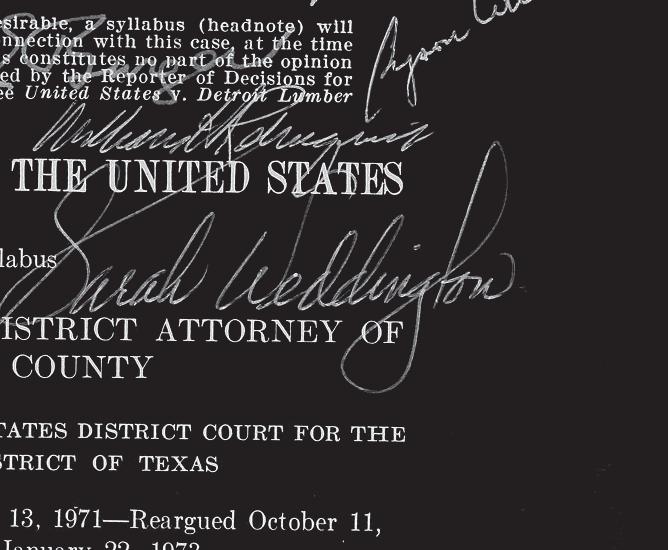
1 minute read
23 Roe v. Wade
R E V. WADE
In 1970, Jane Roe - a fictional name used in court documents to protect the plaintiff’s identity, Norma McCorvey - filed a lawsuit against Henry Wade, a district attorney of Dallas County, Texas. Her lawsuit challenged a Texas law making abortion illegal except by a doctor’s orders to save a woman’s life. In her lawsuit, Roe argued that the state laws violated her right to personal privacy, protected by the Fourteenth Amendment. In January 1973, the Supreme Court issued a 7 against 2 decision ruling that the “Due Process Clause of the Fourteenth Amendment to the U.S. Constitution provides a right to privacy that protects a pregnant woman’s right to choose
Advertisement

R E V. WADE
whether or not to have an abortion.” Roe has come to be known as the case that legalized abortion nationwide. At the time, nearly all states outlawed abortion except to save a woman’s life, preserving the woman’s health, incest, instances of rape, or fetal anomaly. Roe v. Wade made these laws unconstitutional, turning abortion services safer and more widely accessible to women throughout the United States. Since the Supreme Court ruled in favor of Roe, women all over the country have continued to fight and advocate for their reproductive rights. Through protests, marches, and other public demonstrations, these activists have kept abortion and other reproductive rightsrelated topics on the agenda of public policy agents and politicians. Roe v. Wade was only one step towards the legalization of abortion, but it should still be recognized for its relevance.












